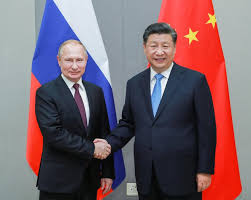Read about ethnic autonomy in these countries.
States in Russia and China are created based on ethnicity, the same in India.
A lot of people are not aware that Russia is a truly Federal country. Ethnic groups in Russia is 78 percent Russians but the remaining ethnic groups maintain their identities and full autonomy.
Russia is the largest country in the world, has great ethnic diversity, is a multinational state, and is home to over 190 ethnic groups nationwide.
According to the population census at the end of 2021, more than 147.1 million people live in Russia, which is 4.3 million more than in the 2010 census, or 3.03%.
At the same time, only 130.587 million census participants indicated their nationality.
The top ten largest nations besides Russians included in descending order:
Tatars, Chechens, Bashkirs, Chuvash, Avars, Armenians, Ukrainians, Dargins and Kazakhs.
Population censuses in Russia allow citizens to report their nationality according not only to their ancestry, but also to self-identification.
The 83 (or 85) federal subjects which together constitute the Russian Federation include:
21 national republics (intended as homes to a specific ethnic minority)
4 autonomous okrugs (usually with substantial or predominant ethnic minority)
1 autonomous oblast
Each of the 21 Republics have their own Army and Police. This makes Russia very strong and versatile. This is Federalism at its best🙏🏻
Ethnic Autonomy in China
The autonomous regions (Chinese: 自治区; pinyin: Zìzhìqū) are one of four types of province-level divisions of China. Like Chinese provinces, an autonomous region has its own local government, but under Chinese law, an autonomous region has more legislative rights, such as the right to “formulate self-government regulations and other separate regulations.”
An autonomous region is the highest level of minority autonomous entity in China, which has a comparably higher population of a particular minority ethnic group.
In China, the Han people are the largest ethnic group in mainland China.
In 2010, 91.51% of the population were classified as Han (~1.2 billion).[1] Besides the Han Chinese majority, 55 other ethnic (minority) groups are categorized in present-day China, numbering approximately 105 million people (8%), mostly concentrated in the bordering northwest, north, northeast, south and southwest but with some in central areas.
Ethnic groups in China have autonomy. In the census form, in China you are expected to fill your ethnic group powered by Irohinoodua with reports from Wikipedia Support Irohinodua. Invest in your future

